Top News

CMS will miss its planned dates to move Healthcare.gov’s hosting to HP and instead will leave the site on Verizon’s infrastructure through the November to February enrollment season. CMS signed a contract last year to move off Verizon after a series of outages. Verizon has upgraded its servers and will offload some of the processing to Amazon Web Services, but testing suggests that users will still be forced into “waiting rooms” during peak use times.
Reader Comments

From Disruptured: “Re: athenahealth’s More Disruption Please annual conference. This is my first time attending the conference. I’m here as a newly established partner in athena’s MDP program. Didn’t know what to expect when I signed up. The meeting has turned out to be a great blend of athena folks, customers, investors, and CEOs from young companies. Helpful sessions and a great opportunity to connect with investors, customers, and possible partners in a small, intimate environment. Athena has been a pleasure to work with, especially compared to other big PM/EMR companies.”
From LND Generis: “Re: Allscripts. This is being emailed to clients. ‘Yesterday we communicated that there was a potential for affected data between FollowMyHealth and Allscripts EHRs. This would affect the Stage 2 View / Download / Transmit measure by indicating that some patients had viewed their chart, when in fact they had not.’” The purported support email says the information has been fixed but an urgent report update needs to be applied for those who are applying for MU Stage 2 for the first time.
HIStalk Announcements and Requests
This week on HIStalk Practice: WRS Health introduces new products for pediatric practices. Philips gains FDA clearance for new digital health applications. Quillen ETSU Physicians goes live on Allscripts. The Hutchinson Clinic implements a new telemedicine program. Code for America makes open-source health data a priority. Thanks for reading.
This week on HIStalk Connect: Rock Health reports that the digital health sector has raised $3 billion in VC funding so far in 2014. Basis unveils its next-generation activity tracker, called the Basis Peak. WiserTogether, a consumer health startup focused on pricing transparency, raises a $9 million Series B.
Acquisitions, Funding, Business, and Stock

Cohealo raises $9 million in financing. The Boston-based company allows hospitals to share medical technology among multiple locations with online resource booking and equipment transportation.

Specialty EHR vendor Nextech acquires ophthalmology EHR vendor MDIntelleSys.

Silicion Valley-based precision medicine data platform vendor Synapse will open a Philadelphia office.

Israel-based MedAware, which offers machine learning-powered CPOE drug warnings, raises $1 million in Series A financing. Its self-learning product (“a spell-checker for medical prescriptions”) analyzes prescription databases to identify deviations from normal treatments prescribed for similar patients, although it’s not clear to me how it connects to the prescribing system.

Athenahealth unveils its 60,000-square-foot Atlanta office that will house 200 employees initially and hundreds more later.

A poorly sourced rumor, resurrected from a few months ago, suggests that Samsung may be talking to Nuance about acquiring the company, which would give Samsung control of the speech recognition technology used by Apple’s Siri.
Sales

Scottsdale Lincoln Health Network (AZ) chooses Premier’s solutions for supply chain, performance, and technology solutions.
Greater Baltimore Medical Center (MD) selects Access web-based forms and patient signature capture.
People

Nick Bonvino (CTG) is named CEO of Greater Houston Healthconnect.

Peter Witonsky, formerly president of iSirona, is now president of the Ionic Division of St. Louis-based Asynchrony. The company seeks 100 engineers who know Ruby, Scala, C#.NET, Java, and mobile programming.

Huffington Post profiles Laurie McGraw, president and CEO of Shareable Ink, in its “Women in Business” Q&A series.

Consulting firm ICF Internation names John Guda (CSC) as SVP/GM of its commercial healthcare business.

I missed this from the new Forbes 400 list of richest Americans: Terry Ragon, founder of InterSystems, is #390 on the list with an estimated net worth of $1.58 billion.
Announcements and Implementations

The Memphis business paper profiles S2 Interactive, which sells software that optimizes tray setup and instrument sterilization in the OR. The company was founded by Larry Foster, RN.

NextGen will offer its customers the Plexus IS Anesthesia Touch anesthesia documentation system.

Two Philips chronic care management telehealth applications developed with Salesforce.com (care coordination and a patient portal) receive FDA 510(k) marketing approval.
Government and Politics
The VA
says it will go live on a new commercial patient scheduling system by 2017 – originally announced as 2020 — and will choose a vendor that can meet its aggressive deadlines.

CMS’s Open Payments database is live, but doctors are finding errors in the information submitted by drug companies. Glaxo admits that incorrectly assigned huge payments made to the National Cancer Institute to a single physician who says he is “shocked by the enormity of this mistake.” Glaxo says it fixed its error in September 2013, but CMS chose to bring Open Payments live with data (including corrections) covering only the first five months of the year. Critics also observe that the system is slow, doesn’t provide total payments, has no search function, doesn’t group corporate entities within a single drug or device manufacturer, and requires a lot of scrolling since the on-screen spreadsheets aren’t sized correctly for a browser. Commenting about the traditional tendency for CMS to make a mess of just about any technology project it undertakes, a former aide to Sen. Chuck Grassley whose bill created the database said, “It’s so complicated that it’s almost useless. It looks like data bombing and I don’t think the average American will find it useful. It’s disappointing.” I’ll go out on a fairly sturdy limb in stating that CMS might be the least competent of many incompetent federal agencies in putting in-house career bureaucrats in charge of opportunistic contractors (Healthcare.gov comes to mind).

FDA releases a cybersecurity guidance document for medical device manufacturers.
Walgreens announces a partnership with the VA in which it it will immunize veterans and share its Greenway EHR information with the VA.
Defense Secretary Chuck Hagel gives the military’s underperforming hospitals six weeks to submit improvement plans, adding that military hospitals offer care comparable to the civilian health system but that’s not good enough. Hopkins patient safety expert Peter Pronovost, MD, PhD said hospitals in general are better at managing their bottom lines than patient care: “This is not unique to them. If you miss your budget, within a week you are in someone’s office. We have not applied that kind of rigorous discipline to quality and safety.”

ONC posts a chief medical officer position. Jacob Reider, MD says in an internal memo that he will remain deputy national coordinator and that hiring a full-time CMO (Reider’s job before he became acting national coordinator and then deputy) is a commitment clinician relevance. People forget that it’s a sacrifice to work for ONC – the job pays a maximum of $157K per year (although there’s a potential unstated extra allowance for physicians), unreimbursed relocation to DC is required, and the application and selection process is tougher than in the private sector. I was thinking last week that I am too critical of government employees and politicians – if they stick with the job I call them career trough-lappers, but if they leave for the private sector I label them as opportunistic sellouts trading their influence for cash.
ONC also lists the open position of director of the office of consumer ehealth, vacated in July by Lygeia Ricciardi.
Technology
This is bizarre, assuming it’s not a hoax. A company called Pavlok (a nod to the dog-testing Pavlov) will produce the ultimate fitness wearable, a $129 fitness band that delivers an electrical shock when the wearer misses fitness goals. The pain-loving founder’s experience includes hiring a woman off Craigslist to slap his face every time he launched Facebook, admitting that, “I have a weird slapping thing.”

This is brilliant: a startup is developing an affordable sensor to warn people that food contains items to which they are allergic. It must be terrifying for people who are highly sensitive to peanuts or other foods to have trust a restaurant waitperson’s assurance that a given menu item is OK for them to eat.
Other
Rock Health tweeted an exuberant message Wednesday that Kleiner Perkins was visiting, proudly observing that “none of these digital health entrepreneurs have a healthcare background.” I can’t decide if it’s sad or just insulting when the techno-weenies brag on their ignorance of the industry into whose face they brashly thrust their VC money and technologies fully confident that they’ve figured it all out from the cheap seats. My consolation is that their contempt will likely turn into humility (or more precisely, a quick redirect to some other seemingly lucrative bright shiny object) when, like their predecessors, they find that healthcare is a lot more complicated than a bunch of arrogant child-entrepreneurs can even begin to understand. I suspect that any of the rumpled CEOs or besuited VC schmoozers would run for the hills when faced with an actual patient or consumer whose medical needs can’t be identified or ameliorated by cute, imitative phone apps that lust to be the Uber or Facebook of healthcare in exploiting some minor niche while dodging the big problems that matter. The healthcare IT burial pit is full of companies both large and small that smugly concluded, “How hard could it be?” and later found out as they ran into one business-killing obstacle after another: insurance companies, the government as both the dominant payer and regulator, privacy, misaligned incentives, and even the most basic question: who is the healthcare customer? Most of us long-timers welcome humble newcomers with fresh ideas that focus on patients, but instead we seem to draw obnoxious brats and their rich uncles who have big iPhone-powered hats but no cattle.
Cedars-Sinai Medical Center (CA) revises its estimate of the number of patients whose medical records were stored on an unencrypted laptop that was stolen in June from 500 to 33,000.
JPMorgan says that a cyberhacking attack this summer exposed the data of 76 million households and 7million small businesses, although the stolen information was mostly benign, such as email addresses. The company had said previously that its increased security efforts would require 1,000 employees and $250 million per year.
Here’s a great Ebola-inspired EHR idea from Linda Pourmassina, MD: when a patient presents with fever, trigger a reminder to ask about travel history. At least Ebola gives otherwise health-indifferent consumers something to obsess over as the latest TV-touted epidemic du jour gains their engagement far more than the daily habits that will likely kill them (see: avian flu, swine flu, H1N1, and Legionnaire’s).

The CEO of Clark Memorial Hospital (IN) announces that the hospital has no choice but to merge with Norton Healthcare because of huge losses causes by bad debt patients and the cost of unnamed software that I assume is its Allscripts Sunrise system.
Sponsor Updates
- Voalte will integrate its Voalte One mobile communications solution with Spectralink’s Android-based handset and will sell and support the offering.
- Impact Advisors is ranked as the top Enterprise Implementation Leadership Epic Partner by KLAS.
- Verisk Health creates an infographic about the cost of claims errors.
- Health Catalyst is offering a free PDF copy of its eBook, “Healthcare: A Better Way.”
- Castro County Healthcare-Plains Memorial Hospital (TX) is implementing Holon’s CollaborNet HIE.
- Forbes discusses how UnitedHealth’s acquisition of MedSynergies will strengthen its Optum division.
- Nuance will participate in the Health Connect Partners Hospital & Healthcare IT convention in Chicago October 13-15.
- Royal Solutions Group announces the integration of its kiosk platform with Merge RIS and OrthoEMR.
- NoteSwift joins Allscripts developer program with a bridge between Allscripts Pro EHR and Dragon Medical.
- ICSA Labs certifies HIStalk sponsors Healthtronics, Iatric Systems, Medseek, PatientSafe Solutions. Quest Diagnostics, Shareable Ink, and Wellsoft in September.
EPtalk by Dr. Jayne
October 1 has come and gone, forcing many organizations to make hard decisions about their participation in the Meaningful Use program. Several of our recent acquisitions are planning to attest for Stage 1 and this quarter is their last chance. It’s been quite a battle to even get them live on EHR in the most rudimentary fashion. Saying that we ran out of time to deliver the kind of workflow redesign needed for true clinical transformation is an understatement.
Our organization was a fairly early adopter of EHR. Our original employed practices went through an intense program of workflow analysis, development of policies and procedures to support new workflows and technologies, and continuous process improvement. We were “doing EHR” for all the right reasons and were seeing good outcomes. Practices that weren’t ready for the transition progressed through more slowly or chose to leave the group. Along came Meaningful Use, however, and we were forced to push everyone through the same funnel.
At this point we’re dealing with a subset of physicians who don’t care and aren’t ready, yet our administration has made it clear that we must make them succeed at any cost. Our operations team has responded by “reporting” them to death. They’re delivering a full spread of Meaningful Use reports to each physician, office manager, and practice lead every Friday in the effort to ensure compliance.
Unfortunately, what they’re not delivering is support for operational and practice policies and workflows to actually lead to a successful outcome. It’s the hospital administrator equivalent of yelling at your teenager for having a loud party, but refusing to stay home on Saturday night to ensure it doesn’t happen again.
My favorite nonsensical example of the week is a practice that is documenting in two EHRs as of Wednesday. Their old system isn’t certified and our employer refuses to pay for a data conversion, so they’re continuing to see patients in the old system while documenting the barebones data needed for Meaningful Use in the certified system. Penny wise and pound foolish – discovery alone on a single lawsuit from this patient safety nightmare would easily cost triple the amount we’d have spent on the conversion. Instead, we’re relying on the practice to abstract patient data on its own and transition “when the practice is ready.”
In other CMS-related news, the first round of Open Payments data has been released to the public. By the time I made it to the website, there were over 21,000 hits on the General Payment Data for 2013. I wanted to dig more deeply in the data, but the website was painfully slow and I didn’t have time to download the dataset before I had to run off to meetings. Some weekend entertainment, perhaps?

As many of you know, my second language is Administralian. I have to admit this reader submission is a puzzler, and not the fun kind heard on Car Talk:
Our recently announced operating model reflects our transformation to an integrated technology company dedicated to building a software-defined network with an engaged, agile workforce whose well-being is a top priority.
I asked the reader what that might mean and received this response: “I wish I knew, because I’m being transformed into it, whatever it is.”
That, dear readers, is what happens when you allow buzzword-happy consultants to write communications snippets. I even tried to use my old-school English class skills to diagram the sentence but couldn’t make a go of it. Is the company using their engaged, agile workforce to build the network, or are they building a network that has the engaged, agile workforce as its members? Whose top priority is the well-being of said workforce and how will it be supported?
I feel bad for the employees at this company. If leadership is willing to economize the use of words to the point where they no longer make sense, leadership is also likely to over-economize in other areas.
Do you have a favorite example of Administralian? Email me.
Lorre’s Healthcare Analytics Summit 14 Report
Being a bit of a data and analytics geek, I looked forward to attending Healthcare Analytics Summit 14. I have attended enough conferences over the years to keep my expectations realistic since I have almost always been disappointed. Admittedly, I have a short attention span and often end up thinking about better uses of my time, but that wasn’t the case at HAS14.
Opening keynote presenter Billy Beane is an excellent speaker and the type of storyteller that I can connect with. He injected humor and anecdotes while taking the audience through formulating his hypothesis about using data and analytics to win baseball games to the outcomes and validation of his theory. He was a brilliant choice by Health Catalyst in creating optimism, a longing for similar outcomes in healthcare IT, and a vision that it is possible.
The next two speakers — Glenn Steele, Jr. MD, PhD, president and CEO of Geisinger Health System, and James Merlino, MD, chief experience officer, Cleveland Clinic — described how their organizations use analytics to transform healthcare and transform the patient experience, respectively. Their case study-like narratives reinforced that not only is it possible to improve outcomes with analytics in healthcare, it is already happening.
Google’s Ray Kurzweil rounded out the day with an enthusiastic discussion about the acceleration of technology is the 21st century and how we can expect that to impact healthcare and medicine.
Day Two brought fresh speakers with more case studies to reinforce the overarching message — data and analytics can transform care and improve outcomes. Breakout sessions were mostly interesting, but I didn’t leave any of them feeling like I learned anything I could use.
Before Health Catalyst CEO Dan Burton delivered the closing keynote, we viewed a 30-minute documentary, From the Heart: Healthcare Transformation from India to The Cayman Islands. It was impressive to see what health systems in other countries have been able to accomplish. It tugged at my heartstrings when one of the Indian cardiologists said, “The first question a mother asks is how much it (open-heart surgery to save her child’s life) is going to cost. The doctors are putting a price on human life.” After learning about how they were able to cut the cost of the surgery in half and maintain it, another physician drove the message home when he said, “The object of technology should be to bring cost down … In healthcare, technology takes the cost up. That can change only by a data-driven, facts-driven medicine where the decision making process itself is driven by technology.”
The logistics of the summit were unlike any I have ever experienced. There were genius bars staffed with technical people to help with everything from installing the custom application to providing directions. My HAS14 app froze and I raised my hand and had a technical person at my side within seconds. Pre-charged chargers the size of playing cards were placed at every seat to keep mobile devices running through the day
Analyst teams were present in every in every session to present real-time data gathered from participants. Attendees voted ahead of time on their seating preference at Wednesday night’s dinner – sitting with similar attendees, sitting with dissimilar attendees, or open seating. Table assignments were pushed out via the app before dinner. It seems like a small thing, but it demonstrated how gathering data could allow for real-time decision making and the ability to create a more desirable outcome based on it.
When Dan Burton took the stage during the opening keynote, he told us we would have the opportunity to learn from innovators in and out of healthcare and he promised there would be no long-winded CEO speeches. That was what Health Catalyst delivered. It was a fun, engaging, and informative summit. I left with a copy of their book, “Healthcare: A Better Way,” a few new connections, and excitement about the future of data and analytics in healthcare.
(Presentations and recordings from the conference are available to all online.)

Contacts
Mr. H, Lorre, Jennifer, Dr. Jayne, Dr. Gregg, Lt. Dan, Dr. Travis.
More news: HIStalk Practice, HIStalk Connect.
Get HIStalk updates.
Contact us online.

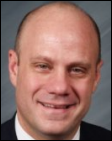


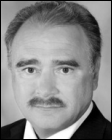


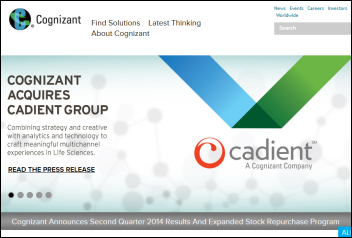
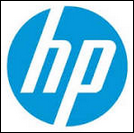
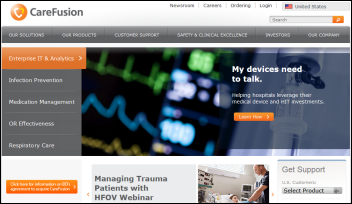


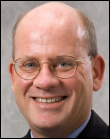
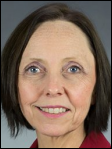

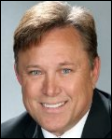

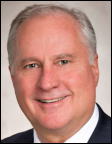



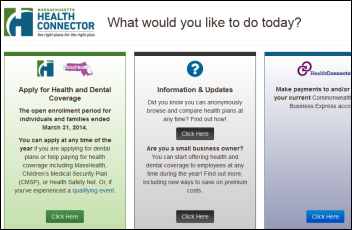

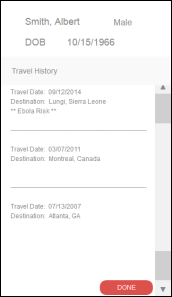


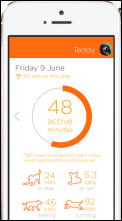


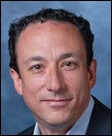



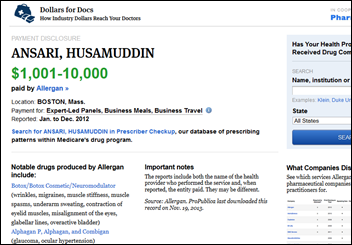


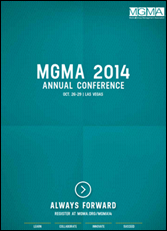














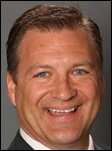
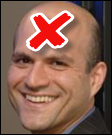

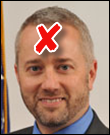




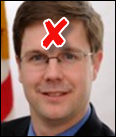

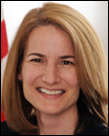

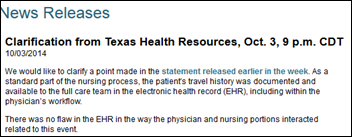
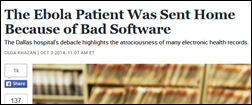












































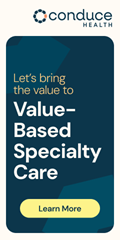












































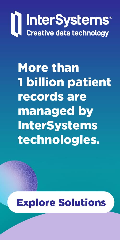




















The primary point of using the Cloud is using operating expenses vs limited capital ones and avoiding having to update…